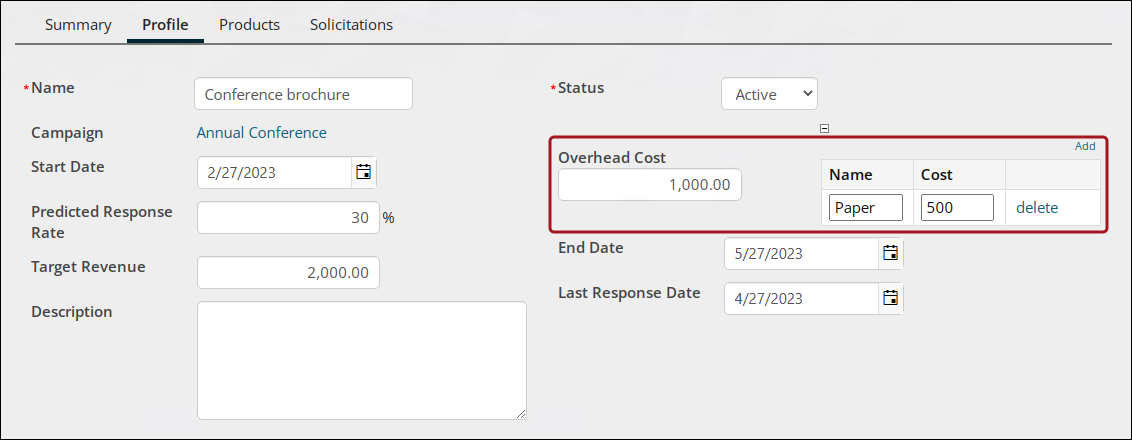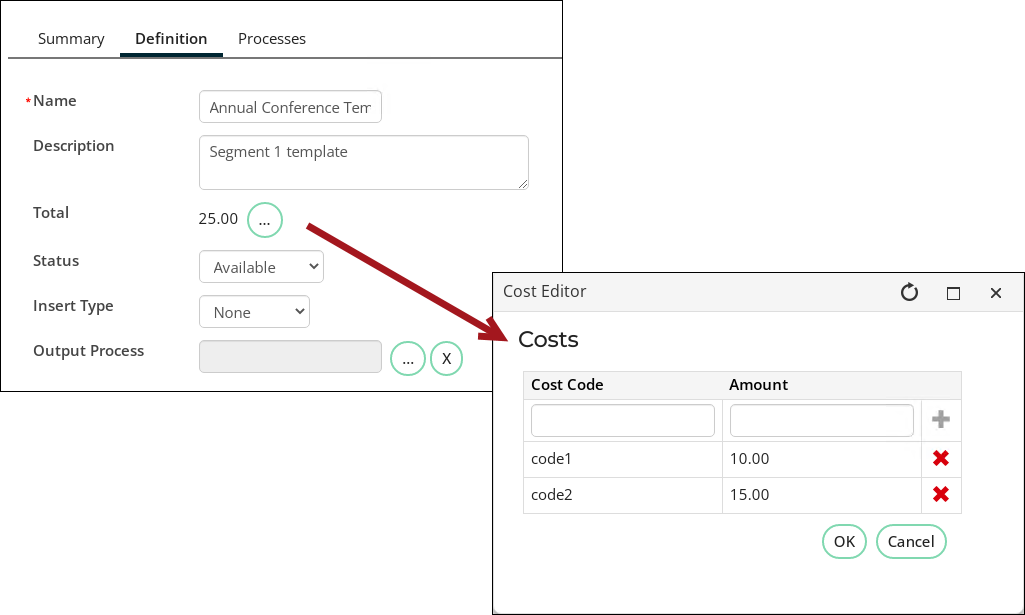Last updated on: August 12, 2025
By planning your campaign carefully, you and your staff can perform efficiently and effectively. The planning process includes:
- Setting goals for the campaign.
- Defining campaign components and hierarchy.
- Defining the budget and cost tracking, if any.
- Identifying targets.
- Specifying marketing efforts.
- Defining campaign performance measurement.
Your campaign might be an isolated, one-time-only campaign, or part of an annual or multiple-year strategic plan. Factor this into your planning.
In This Article
- Setting goals for the campaign
Defining campaign components and hierarchy
Defining cost tracking data
Identifying targets
Planning communications efforts
Defining campaign performance
Setting goals for the campaign
The goals and objectives for your campaign are unique to your organization. A goal is a simple statement that expresses what you want to do, such as:
- Increase the number of new donors
- Enroll new members
- Sell a new product
- Solicit advertisers for your periodicals
- Get a message out
An objective then states a measurable amount, such as:
- Increase new donor count by 5%
- Enroll 150 people
- Sell 2,000 units
- Increase ads placed by 15%
- Contact 15,000 prospects
You might set response rate goals, enrollment goals, sales goals, or budget goals. Knowing this information in advance can help you determine how best to set up your campaign.
Defining campaign components and hierarchy
A campaign is an organized set of appeals that you create to accomplish your marketing goal. The campaign can consist of one or many appeals and solicitations.
Tips on defining campaign hierarchy:
- Use appeals to split your campaign into major efforts.
- Define one or more solicitations for each appeal by target group, message, or delivery method.
- Assign one or more source codes to each solicitation to track responses.
- Create unique names at all levels: each campaign, each appeal within a campaign, each solicitation within an appeal, and each source code within a solicitation. The naming convention might be by department, type of campaign, year or quarter, or other meaningful methods.
Defining cost tracking data
In marketing campaigns, costs are tracked to calculate metrics such as Net Revenue, Cost per Thousand, Revenue per Thousand and Return on Investment. The cost of a campaign includes the overall operational costs of the campaign and the individual costs of each "package" that is sent.
Operational costs
Operational costs include any items that are applied to the entire marketing effort, such as:
- Paper
- Printing
- Letter shopping
You can track these costs at the appeal or source code level. In a basic campaign, you will probably define few source codes. In this case, it is effective to track operational costs at the source code level.
However, you might choose to track operational costs at the appeal level if you are managing a complex campaign with dozens or hundreds of source codes.
Package costs
Package costs include any items that are applied to the actual insert or package, such as:
- Postage
- Outer envelope
- Business reply envelope
- Business reply device
- Telemarketing costs
These costs are tracked at the source code level.
Tracking costs at the appeal level
To track costs at the appeal level, do the following:
- Go to Marketing > Campaigns > Track campaigns.
- Click Show / Hide Appeals and open an appeal.
- (optional) Click the Profile tab and click the plus sign next to the Overhead Cost field.
- Add an additional cost and click Save.

Tracking insert costs
To track costs for an insert, do the following:
- Go to Marketing > Campaigns > Define inserts.
- Select an insert.
- Click the browse icon next to Total.
- Enter a value in the Cost Code and a cost per piece in the Amount.
- Click + for each cost code you want to add.
- Click OK to save the values. Confirm that the Total on the Insert window now shows the sum of the values entered on the Costs pop-up.

Identifying targets
Getting the right message to the right person at the right time is critical to the success of your campaign. With iMIS Marketing, you can target prospects with simple or sophisticated tools. By precisely defining target markets, you can refine campaign messages with great accuracy. And you can measure the response rate to the messages for specific groups of people.
Think about which factors should be included and which should be excluded for each targeted group. You will use these factors to define the segment of prospects that you will be targeting for each solicitation.
Plan for the cases where customers 'opt-in' and 'opt-out' of different marketing activities. After the targeted message is delivered, the prospect will or will not respond. iMIS Marketing gives you the power to define and manage processes for either case.
Some organizations use external lists to identify targets for their campaigns. External lists are brokered with individual list agreements that govern how the list can be used and for how long. Sometimes lists are given to the organization with all names and contact information attached. Other times, lists are used once and the organization only sees the contact information when the customer responds.
Planning communications efforts
Plan the efforts you will use to communicate with contacts or prospects. Each effort can be a combination of brochures, email messages, promotional goods, or whatever items you deem necessary. Define the contents and drop date for each package.
In addition, plan how you will communicate among the team and among your organization. Are there specific reports that will be useful for staff? Will you need to send email messages to the team upon completion of certain tasks?
Defining campaign performance
Measuring the success of your campaign will help improve your next marketing effort. Each time the cycle repeats itself, you become more efficient at honing your message and delivering the right message to the right person at the right time. As a result, you are able to set ever higher goals for your organization.
iMIS provides you with analysis, workflow design, and communications tools to optimize the marketing cycle throughout your organization. Effective analysis allows you to target your time, energy, and budget to those pursuits, which are most likely to be profitable.
The iMIS database stores all of your important transactional, historic, and demographic data, giving you the power to prioritize the data and present it to stakeholders in a meaningful manner.
Make sure you define how you will track data to determine performance. Some suggestions:
- Run counts and statistics on your database before you start the campaign to define your starting point.
- Specify your predicted response rate.
- Determine the metric you will use to show success.
- Synchronize responses regularly. This helps you stay up-to-date with metrics.
See Monitoring and measuring campaign performance for more information.